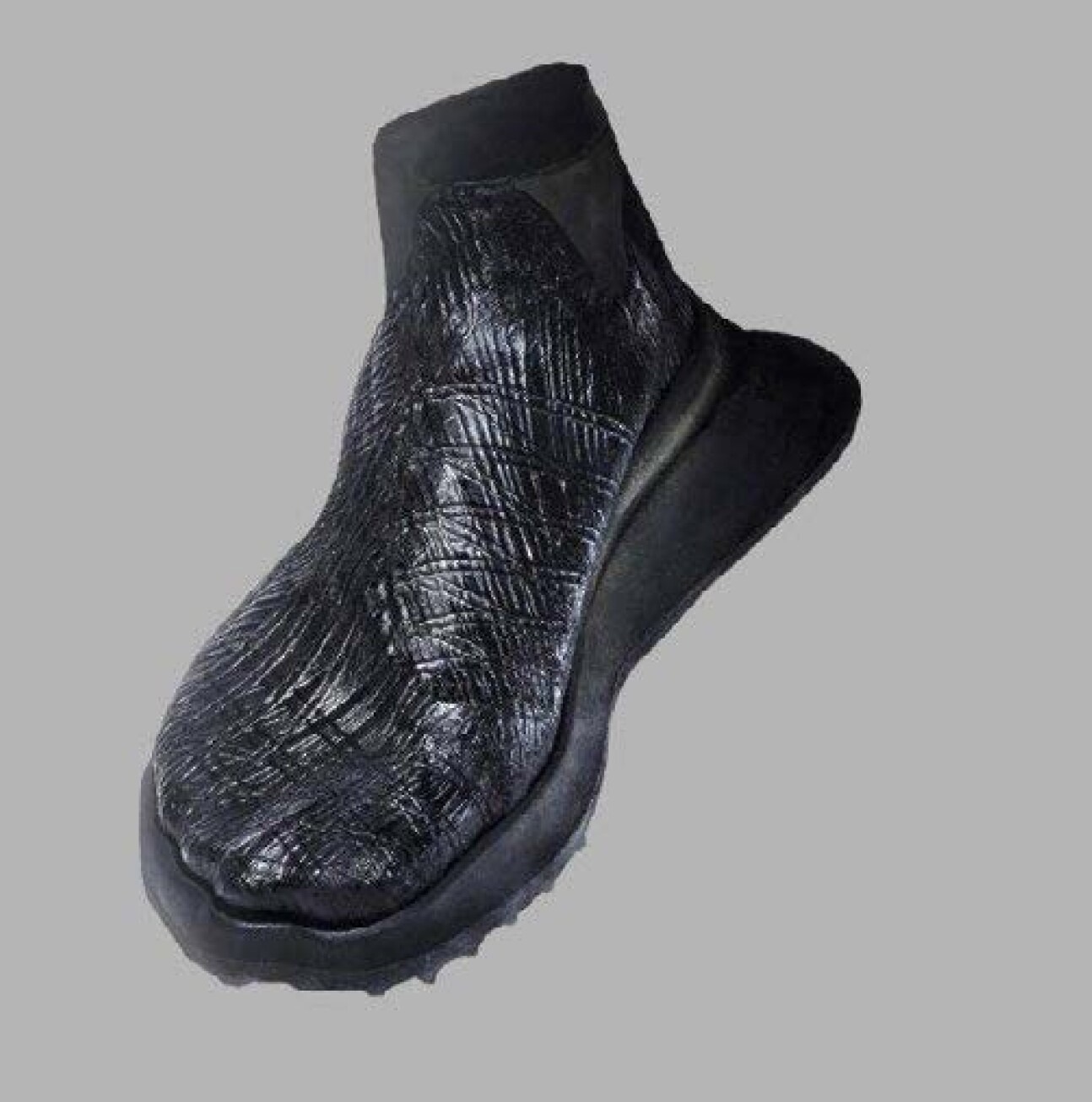Scientists at Imperial College London have modified bacteria genetically to produce leather that is free from animal products and plastic and has the ability to dye itself.
 Image Credit: Imperial College London
Image Credit: Imperial College London
Scientists and businesses have been using microbes to produce sustainable textiles or industrial dyes in recent years, but this is the first time that bacteria have been genetically modified to produce both a material and its own pigment at the same time.
One of the fashion industry’s most environmentally hazardous processes is the use of synthetic chemical dyes, and black dyes, particularly those used to color leather, are especially dangerous. To address this, Imperial researchers turned to biology.
The researchers claim that by addressing the issue, their vegan, plastic-free, self-dying leather, which has been fashioned into prototypes for shoes and wallets, represents a breakthrough in the pursuit of more eco-friendly fashion.
Their novel method, published in the journal Nature Biotechnology, may be modified to allow bacteria to produce materials with a wide range of vivid colors and patterns and more eco-friendly substitutes for conventional textiles like cashmere and cotton.
Inventing a new, faster way to produce sustainable, self-dyed leather alternatives is a major achievement for synthetic biology and sustainable fashion. Bacterial cellulose is inherently vegan, and its growth requires a tiny fraction of the carbon emissions, water, land use and time of farming cows for leather. Unlike plastic-based leather alternatives, bacterial cellulose can also be made without petrochemicals, and will biodegrade safely and non-toxically in the environment.”
Tom Ellis, Study Lead Author and Professor, Department of Bioengineering, Imperial College London
Designer Collaboration
Through genetic modification, the researchers produced sheets of microbial cellulose, a strong, flexible, and malleable material that is already widely used in food, cosmetics, and textiles. This allowed the researchers to create an alternative to self-dying leather. The genetic alterations “taught” the microorganisms cultivating the material to also produce eumelanin, a dark black pigment.
They collaborated with designers to develop a sheet of bacterial cellulose in a specially made shoe-shaped vessel in order to grow the upper portion of a shoe - minus the sole. Following 14 days of growth, during which the cellulose assumed the proper shape, the shoe was gently shaken for two days at 30 °C to stimulate the bacterial production of black pigment, which dyed the material from the inside out.
They also grew two separate sheets of cellulose, cut them to size, and sewn them together to make a black wallet.
The bacteria can be modified to produce colors in response to blue light by utilizing genes from other microbes, as the researchers also showed with the prototypes. Blue light is used to project a pattern or logo onto the sheets. In response, the bacteria produce colored proteins that glow.
As the material develops, they can use this technique to project patterns and logos onto the bacterial cultures, causing patterns and logos to emerge from within the material itself.
Our technique works at large enough scales to create real-life products, as shown by our prototypes. From here, we can consider aesthetics as well as alternative shapes, patterns, textiles, and colors. The work also shows the impact that can happen when scientists and designers work together. As current and future users of new bacteria-grown textiles, designers have a key role in championing exciting new materials and giving expert feedback to improve form, function, and the switch to sustainable fashion.”
Dr. Kenneth Walker, Study Co-Author, Department of Bioengineering, Imperial College London
Greener Clothes
Currently, the research team is experimenting with different colored pigments, trying to use ones that the material-growing microbes can also produce.
The Biotechnology and Biological Sciences Research Council (BBSRC), a division of UK Research and Innovation (UKRI), has also awarded the researchers and their partners a £2 million grant to use bacterial cellulose and engineering biology to address more fashion-related issues, like the use of toxic chromium in leather manufacturing processes.
Professor Ellis said: “Microbes are already directly addressing many of the problems of animal and plastic-based leather, and we plan to get them ready to expand into new colors, materials and maybe patterns too. We look forward to working with the fashion industry to make the clothes we wear greener throughout the whole production line.”
The writers collaborated closely with Modern Synthesis, a biodesign and materials company located in London that specializes in cutting-edge microbial cellulose products.
Source:
Journal reference:
Walker, T., K., et al. (2024) Self-pigmenting textiles grown from cellulose-producing bacteria with engineered tyrosinase expression. Nature Biotechnology. doi.org/10.1038/s41587-024-02194-3